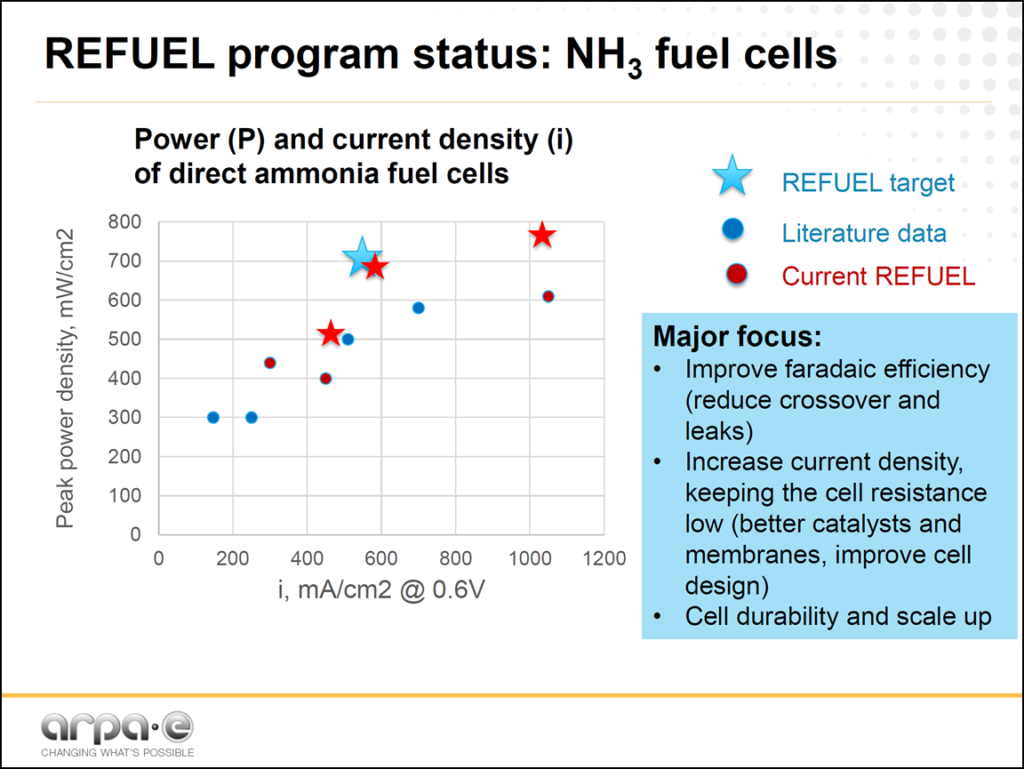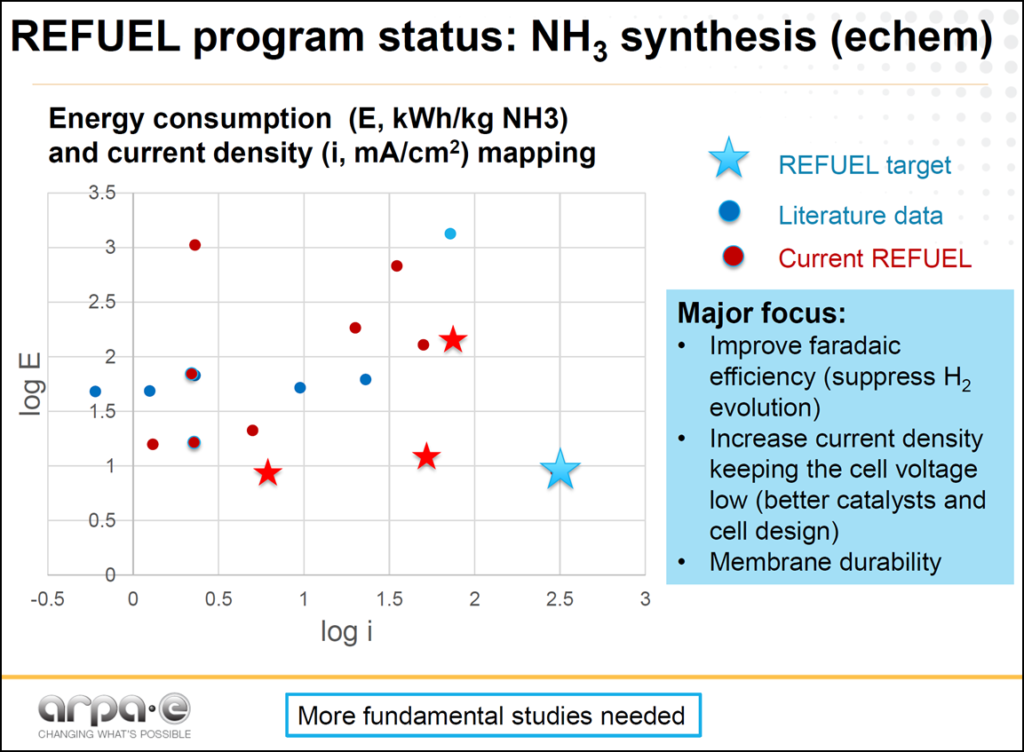ARPA-E Issues RFI for Next-Gen Ammonia System Integration
By Stephen H. Crolius on February 27, 2020
This week the United States Department of Energy’s Advanced Research Projects Agency – Energy (ARPA-E) issued a Request for Information under the title “Next Generation Ammonia System Integration Project.” This is a strong signal that ARPA-E intends to see the ammonia energy technologies in its portfolio through to commercial fruition.
ARPA-E’s mission is to provide “R&D funding for transformational ideas to create America’s future energy technologies.” The agency “focuses exclusively on early-stage technologies that could fundamentally change the way Americans get, use, and store energy.” It features a culture of assertive management with the goal of putting its grantees in a position to “to commit to the next stage of development once ARPA-E’s funding period is over.” Core to its approach are a series of “results-oriented handoff strategies” that encourage new business formation, attraction of private-sector investment, and formation of strategic partnerships with other players, both public and private. The agency, in other words, is geared to produce significant, tangible results — and it is having success, as indicated by metrics from its first decade of activity: “71 ARPA-E project teams have formed new companies to advance their technologies … 109 ARPA-E projects have partnered with other government agencies for further development … [and] $2.6 billion [has been attracted] in private-sector follow-on funding.” (The agency spent approximately $2.3 billion during its first nine years.)
A crop of ammonia energy technologies entered the ARPA-E system with the December 2016 launch of the Renewable Energy to Fuels through Utilization of Energy-Dense Liquids (REFUEL) program. At that time, the agency announced that it would provide $35 million in funding for 16 projects intended to “accelerate the shift to domestically produced transportation fuels and enable greater integration of renewable energy sources onto the grid …” The fuel targeted by thirteen of the 16 projects is ammonia. As reported in contemporaneous Ammonia Energy articles, eight of the ammonia projects were focused on synthesis technologies and six on fuel use. (One project is counted in both categories.)
In November 2019, REFUEL Program Director Grigorii Soloveichik delivered a paper at the Ammonia Energy Conference entitled “ARPA-E Refuel Program: Distributed Production of Ammonia and Its Conversion to Energy.” The paper gives clear indications that technical progress is being made. On the synthesis side, several REFUEL electrochemical technologies are getting within range of the “extremely challenging goal” that ARPA-E had established in this area. On the use side, two of the technologies have so far met the ARPA-E goal.

This account of the REFUEL program provides essential context for the “Next Generation Ammonia System Integration” Request for Information. ARPA-E would like to move the REFUEL technologies toward commercialization and has a precise idea about how that might be accomplished: provide funding for the development of an “integrated system involving a skid-mounted ammonia synthesis system connected to an intermittent renewable energy source at a production scale of several hundred kg to 1 metric ton of ammonia per day.” In the envisioned approach, the goal will be to “integrate developed technologies and validate their reliability under variable load and start/stop operations, manufacturability, and favorable economics at scale.”
Accordingly, REFUEL grantees (and grantees from related programs) are invited to share information on three topics. First what “capabilities and needs” do they have relative to technologies such as “advanced catalysts for low pressure and temperature synthesis [and] novel ammonia separation methods?” Second, how well positioned are they to “integrate, build and test the [envisioned] ammonia synthesis system?” And third, what ability do they have to “advance promising ammonia synthesis and related technologies to market,” either on their own “or by forming and leading a consortium of research teams with investors and private sector partners?”
The final question seems to be especially important in ARPA-E’s construct. The agency sees a need for “teams with more diversified professional engineering and management capabilities needed for large projects, in contrast to typical ARPA-E projects that tend to focus heavily on bench-scale research or early, small-scale proof-of-concept prototypes.” In fact, the agency wants to encourage “engagement with industry stakeholders [such as] state development agencies, potential customers, investment diligence organizations, project financiers, or others with the ability and interest to facilitate the eventual translation of technology from the bench to commercial scale.” Accordingly, the agency is willing to “consider funding a public-private innovation collaboration or consortium to that end.”
Possible funding amounts are not discussed, although a reference to a potential per-project cost of $15 million suggests that a pool in the range of $25 million to $50 million may be on tap for the eventual program.
Responses to the Request for Information are due by March 25, 2020.
